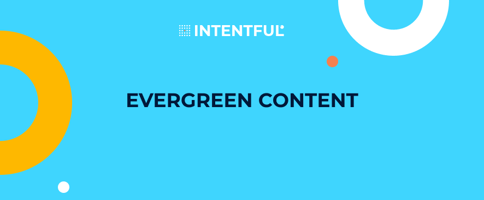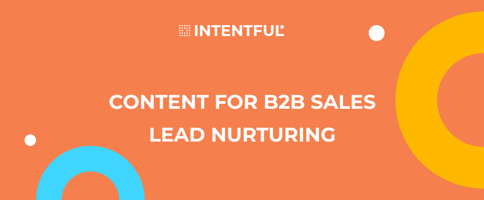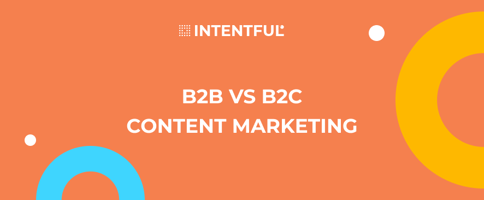In the constantly changing world of content marketing, one thing has consistently proven its worth....
Can AI be used for social media content?
Imagine being able to create, at scale, compelling social media content resonating with your audience — with the help of AI. Can social media content be created by using AI tools, like ChatGPT and others? Let's explore the possibilities of using artificial intelligence in social media marketing.
Step 1: Train AI to Know Your Brand
If you tried using some of the AI tools for social media content creation, there is a good chance you were blown away by how fast and easy it is. At the same time, you may have seen that the facts are completely off, and the tone and voice are not what’s in your brand guidelines.
The reason it happens is the large language model (an LLM) that is used as a foundation of most AI tools has a finite dataset that it was trained on. Right now, it is through September 2021. To generate content suitable for your brand, make sure AI knows your brand. At Intentful, we train AI to know your brand's unique tone, style, and facts to ensure that the content generated aligns with your messaging and brand guidelines.
Step 2: Set Communication Objectives
In social media marketing, it is crucial to set precise communication objectives for your content. This means that you should have a clear idea of what you want to achieve with your social media presence, what you want to say, and who is the audience.
Here are some examples of communication goals:
- Building brand awareness is essential if you are a new brand or looking to expand your reach (an ongoing practice for most brands). Staying top of mind falls into the same type of goals.
- Driving engagement can lead to increased brand loyalty and more sales.
- Promoting products or services with the help of content that showcases your offerings and convinces your readers to make a purchase.
- Educating your audience to establish your brand as a thought leader and increase trust.
- Introducing a new product or service.
Whatever your communication objectives, it is vital to clearly understand what you want to achieve. This will help you create targeted, compelling content and ultimately reach your marketing goals, no matter if it is a human or AI working on your content plan.
Step 3: Build a Content Plan
Once communication objectives have been established, instruct AI to build a content plan. Remember to be as specific as possible.
See how easy it can be. In this video, we ask AI to create a content plan for Intentful – one for LinkedIn, and another one for Facebook. It does require editing, but after some minor edits, it is ready to be used. All under a minute.
Step 4: Create Content
Once you have the content plan edited and adjusted by your team, start creating content according to it. Depending on social media of your choice, you may need to expand your original content outline. Or not – it depends on the results of Step 3.
Let’s continue with our examples of AI-generated content for social media by using our own brand, Intentful.
We copied one of the topics from the content plan above, and asked AI to create a blog post.
Does it require editing? Of course. But it is a great starting point and most of the content suggested by the AI makes sense.
At Intentful, we offer two options of content delivery: turnkey creation and a customized AI platform for your team to use.
With the first option, our editorial team uses Intentful AI to create content based on your brief, similar to how you would brief freelance writers or an agency. Once created, our editors thoroughly review and edit each text through three stages of quality assurance to ensure it meets our high standards.
Alternatively, Intentful can create an instance of our AI platform for your team. Using it, your specialists can create texts with greater control over the process. Such platform is customized to your company needs, an AI model is trained to know your brand (or brands), and onboarding and support is provided.
Creating images
There have been significant advances in Text-To-Image, but as of March 2023, it is not yet ready for full-scale commercial use, unlike text. However, you can easily start using it to show concepts and drafts. Take a look:
Text-to-image capability is, of course, included in our AI platform for turnkey delivery as well as for enterprises. It is perfect for social media content planning. Once you have a content plan defined, you can easily copy and paste the caption description into text-to-image, and have your concept ready in seconds.
This can save time and effort in the creative process while increasing the chances of creating imagery that resonates with your target audience.
Quality assurance: editing, proofreading, and fact-checking
It is crucial to have trained specialists check AI-generated texts for accuracy and style. Here are some valuable tips:
- Factual accuracy is the first thing trained specialists should check AI-powered content for. AI algorithms rely on statistical probability to generate new words and sentences. Here is how AI predicts the next word: it uses the frequency of words or expressions in the texts it has been trained on to determine which one should follow next. Sometimes, this can result in "hallucinations," or the AI saying things that aren't true – this mostly happens when there is no information on the subject you would like to write about in the original training dataset
- One of the benefits of AI-generated texts is that they’re almost always grammatically correct.
- While AI-created content can be engaging, it may lack the human touch that comes from a copywriter. The style is essential to the brand's messaging, and editors must ensure that the texts have a natural flow and are free of repetitions.
- Finally, human specialists make sure that the AI-generated texts include all the correct keywords and intent. Doing that is essential for SEO and visibility to the right audience.
Step 5: Publish
Congratulations! You’ve completed all the necessary steps to create an effective social media post. You’ve identified your target audience, created an outline, written a compelling text, and edited it thoroughly.
The final step is to hit the “Publish” button and share your post. This can be a nerve-wracking moment, but it’s important to remember that your content has value and deserves to be shared. It’s contributing to the online conversation and potentially reaching a broad audience.
Before publishing, take one last look at your post to make sure everything is in order. Check for any typos, formatting errors, or broken links. Make sure your images are optimized and placed correctly. And don't forget to add relevant tags and categories to help your post get discovered by interested readers.
Step 6: Measure KPIs
It's not enough to create content, publish it, and hope it will drive engagement and conversions. To evaluate the success of your efforts, you need to track key performance indicators or KPIs.
In a recent article, Intentful discussed the importance of monitoring content KPIs and provided an overview of essential metrics. Let's look at these KPIs to see their significance.
Creation KPIs you should track include:
- Production rate — the number of pieces you produce within a particular period. Setting a target for the amount you want to create regularly is essential.
- Diversity — the variety of formats you use, such as blog posts, videos, infographics, and podcasts.
Engagement KPIs track the effectiveness of your content in engaging your target audience. Consider the following examples:
- Page views — the number of times your content is viewed.
- Time on page — the time visitors spend on your pages.
- Bounce rate — the percentage of people who leave your website after viewing only one page.
Conversion KPIs measure the effectiveness of your content in driving conversions. Here are some examples:
- Conversion rate — the percentage of visitors completing a desired action, for instance, filling out a form or purchasing something.
- Click-through rate — the percent of people who click on a call-to-action (CTA) button or link.
- Cost per conversion — the amount of money you spend on each conversion.
For a more detailed discussion, see our article Content KPIs to Measure in 2023.
Using AI to create social media texts can be a game-changer for businesses looking to streamline their content creation process and increase engagement with their audience.
Social media is hugely important for brands. A very recent study by Hootesuite includes by-country analysis on how many people use social media to connect with brands.
By following the steps outlined in this article, you can get started and see the benefits for yourself.
If you have any further questions, don't hesitate to contact Intentful. Our team is always here to help you optimize your content strategy and achieve your business goals. Thank you for reading, and we look forward to hearing from you soon.


